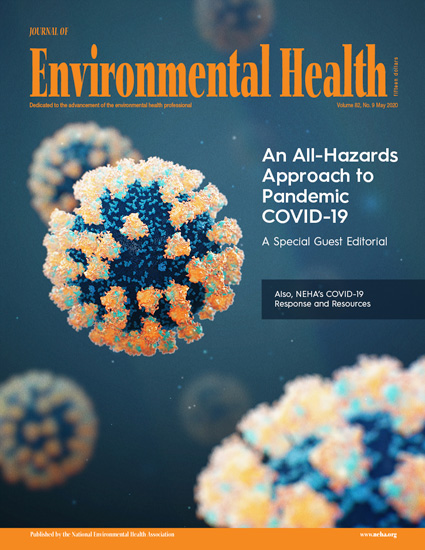环境中长期接触有机磷农药与人类肠道微生物组:一项观察性研究
IF 5.3
2区 环境科学与生态学
Q1 ENVIRONMENTAL SCIENCES
引用次数: 0
摘要
有机磷农药(OP)与人类的各种健康状况有关。动物实验和体外模型表明,OP 也可能影响肠道微生物群。我们研究了环境中长期接触 OP 与人类肠道微生物变化之间的关系。我们从一项基于社区的帕金森病流行病学研究中招募了 190 名参与者,他们居住在加利福尼亚州一个以大量使用农业杀虫剂而闻名的地区。其中,61%的参与者患有帕金森病,他们的平均年龄为 72 岁。通过对粪便样本进行 16S rRNA 基因测序,获得了微生物组和预测的元基因组数据。环境中长期暴露于 OP 的情况是通过地理信息系统中的杀虫剂施用记录与住宅地址相结合进行评估的。我们研究了因暴露于 OP 而导致的肠道微生物组差异,特别是基于香农指数和 Bray-Curtis 差异性的微生物多样性差异、不同类群丰度差异,以及根据回归模型预测的 Metacyc 通路表达,并对潜在的混杂因素进行了调整。OP 暴露与肠道微生物组的α或β多样性无关。然而,在 OP 高暴露人群中,预测的元基因组更稀疏,表达也更不均匀(p = 0.04)。此外,我们还发现,两个细菌科、22 个属的丰度以及 34 种 Metacyc 通路的预测表达与长期暴露于 OP 相关。这些途径包括与细胞呼吸有关的过程受到干扰、与细菌壁结构有关的化合物的生物合成和降解增加、RNA/DNA 前体的生物合成增加以及维生素 B1 和 B6 的合成减少。我们的研究结果表明,环境中长期接触 OP 杀虫剂会改变人类肠道微生物组的组成及其预测的新陈代谢,这与之前的动物研究和体外研究结果相吻合。本文章由计算机程序翻译,如有差异,请以英文原文为准。
Ambient long-term exposure to organophosphorus pesticides and the human gut microbiome: an observational study
Organophosphorus pesticides (OP) have been associated with various human health conditions. Animal experiments and in-vitro models suggested that OP may also affect the gut microbiota. We examined associations between ambient chronic exposure to OP and gut microbial changes in humans. We recruited 190 participants from a community-based epidemiologic study of Parkinson’s disease living in a region known for heavy agricultural pesticide use in California. Of these, 61% of participants had Parkinson’s disease and their mean age was 72 years. Microbiome and predicted metagenome data were generated by 16S rRNA gene sequencing of fecal samples. Ambient long-term OP exposures were assessed using pesticide application records combined with residential addresses in a geographic information system. We examined gut microbiome differences due to OP exposures, specifically differences in microbial diversity based on the Shannon index and Bray–Curtis dissimilarities, and differential taxa abundance and predicted Metacyc pathway expression relying on regression models and adjusting for potential confounders. OP exposure was not associated with alpha or beta diversity of the gut microbiome. However, the predicted metagenome was sparser and less evenly expressed among those highly exposed to OP (p = 0.04). Additionally, we found that the abundance of two bacterial families, 22 genera, and the predicted expression of 34 Metacyc pathways were associated with long-term OP exposure. These pathways included perturbed processes related to cellular respiration, increased biosynthesis and degradation of compounds related to bacterial wall structure, increased biosynthesis of RNA/DNA precursors, and decreased synthesis of Vitamin B1 and B6. In support of previous animal studies and in-vitro findings, our results suggest that ambient chronic OP pesticide exposure alters gut microbiome composition and its predicted metabolism in humans.
求助全文
通过发布文献求助,成功后即可免费获取论文全文。
去求助
来源期刊

Environmental Health
环境科学-公共卫生、环境卫生与职业卫生
CiteScore
10.10
自引率
1.70%
发文量
115
审稿时长
3.0 months
期刊介绍:
Environmental Health publishes manuscripts on all aspects of environmental and occupational medicine and related studies in toxicology and epidemiology.
Environmental Health is aimed at scientists and practitioners in all areas of environmental science where human health and well-being are involved, either directly or indirectly. Environmental Health is a public health journal serving the public health community and scientists working on matters of public health interest and importance pertaining to the environment.
 求助内容:
求助内容: 应助结果提醒方式:
应助结果提醒方式:


